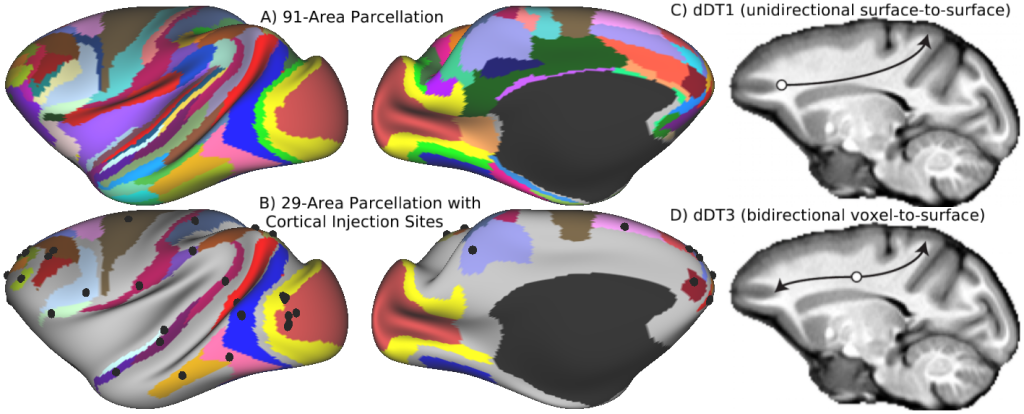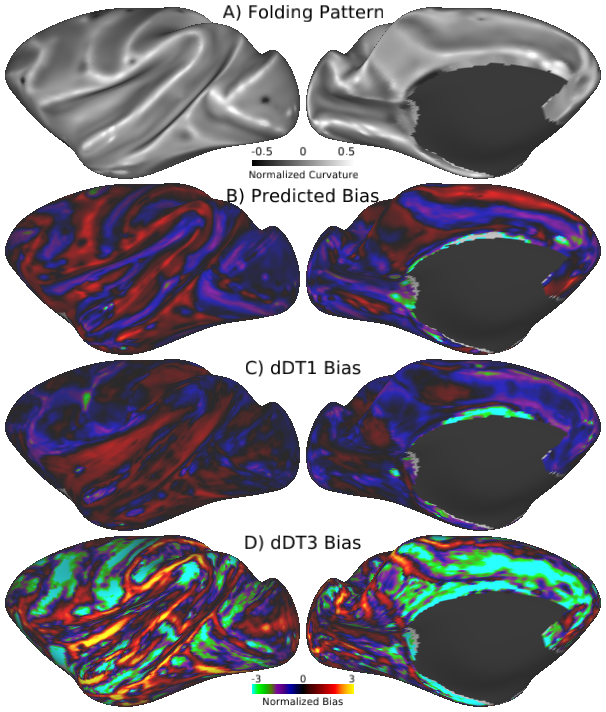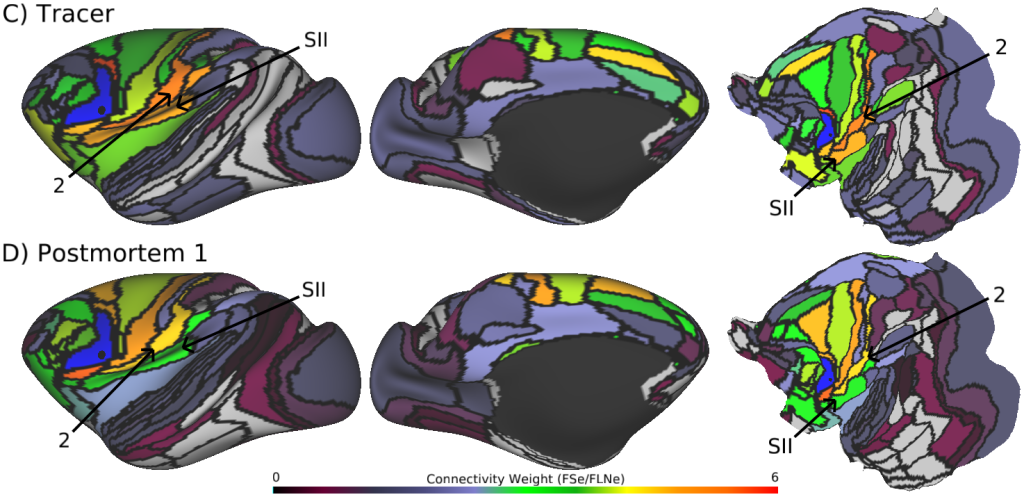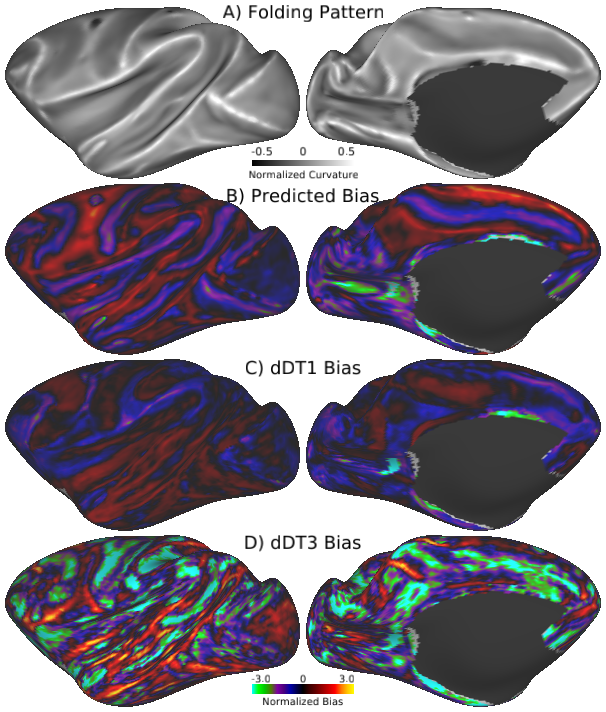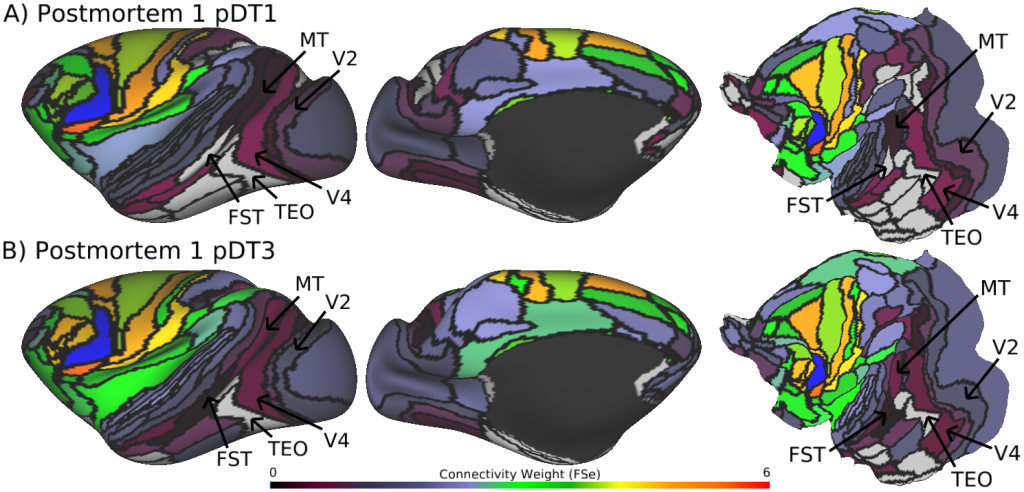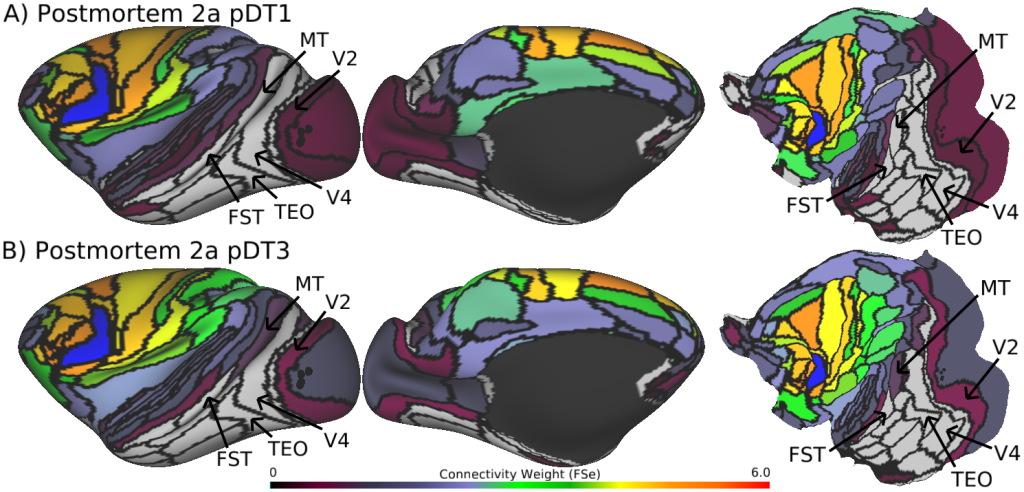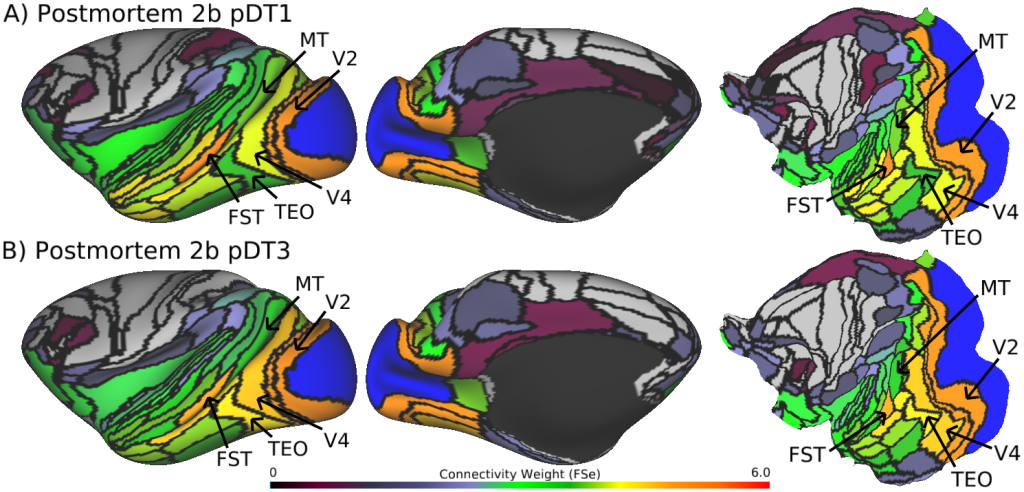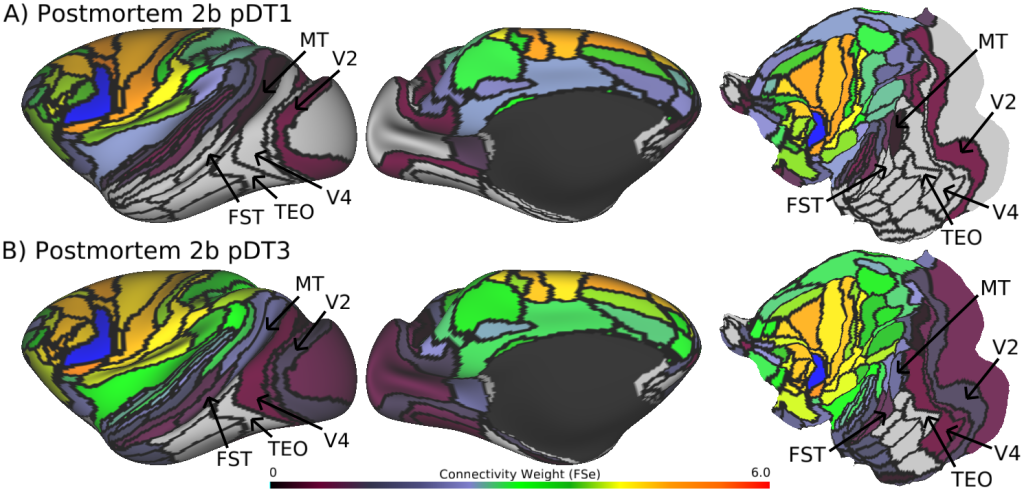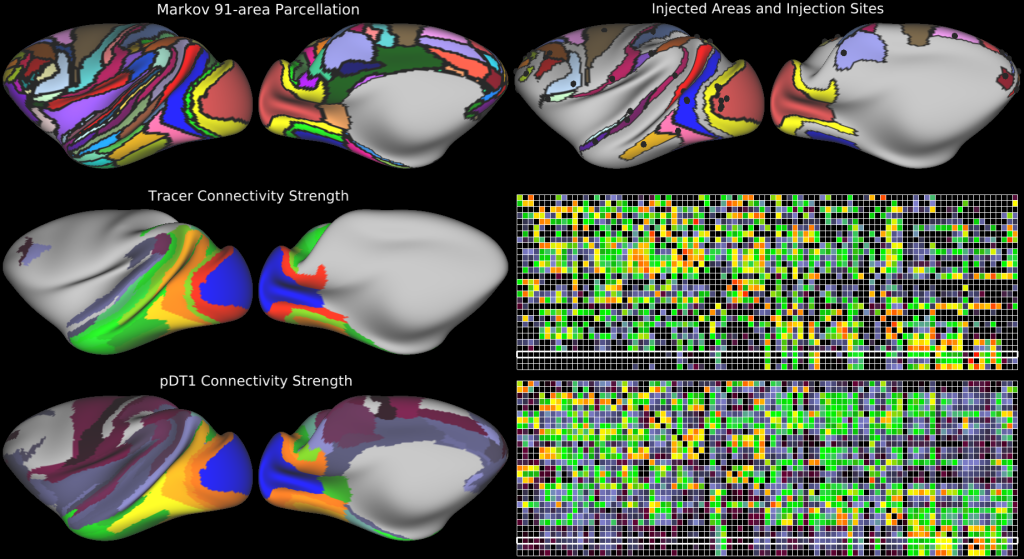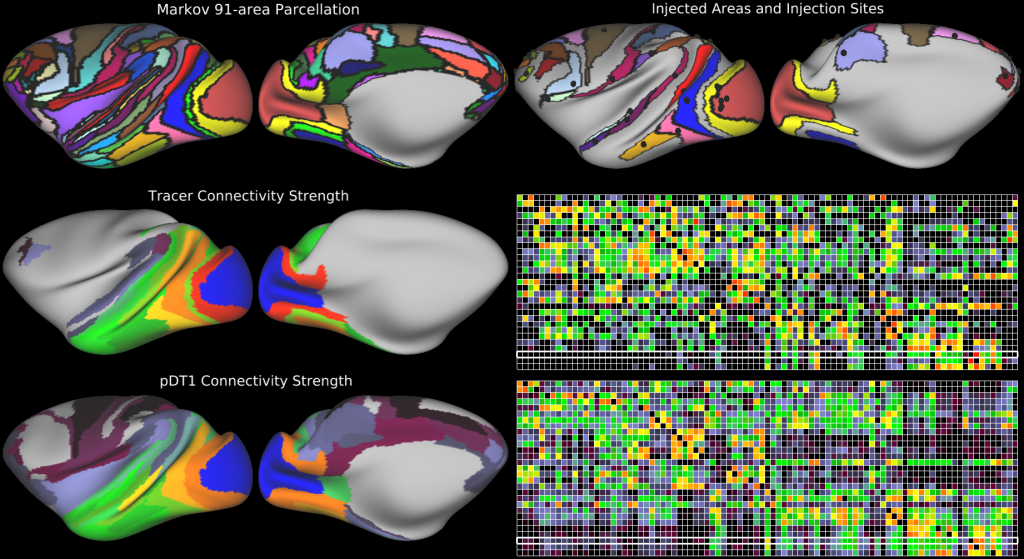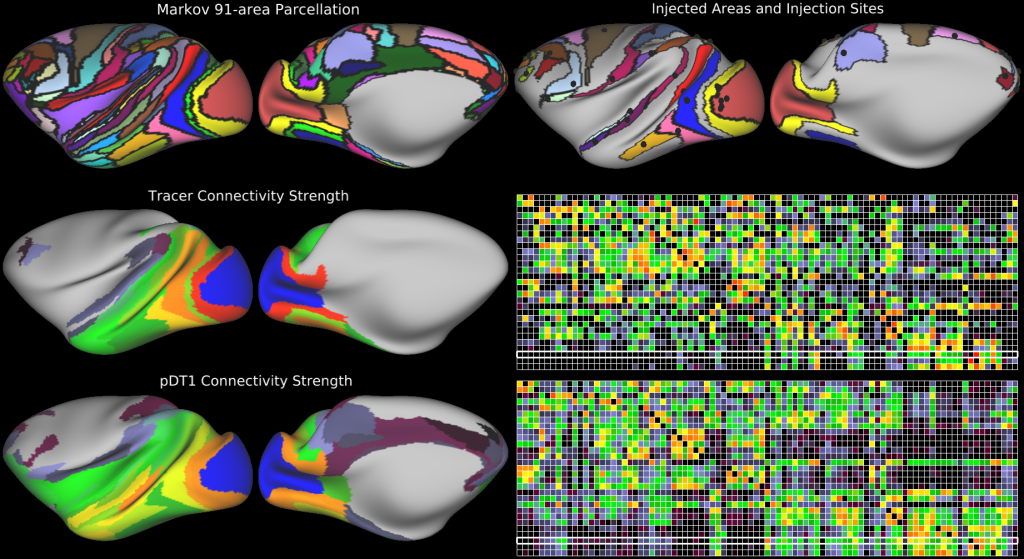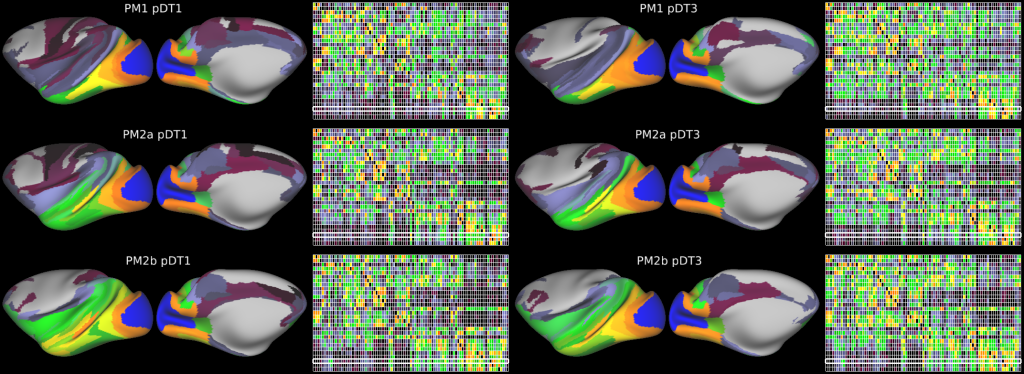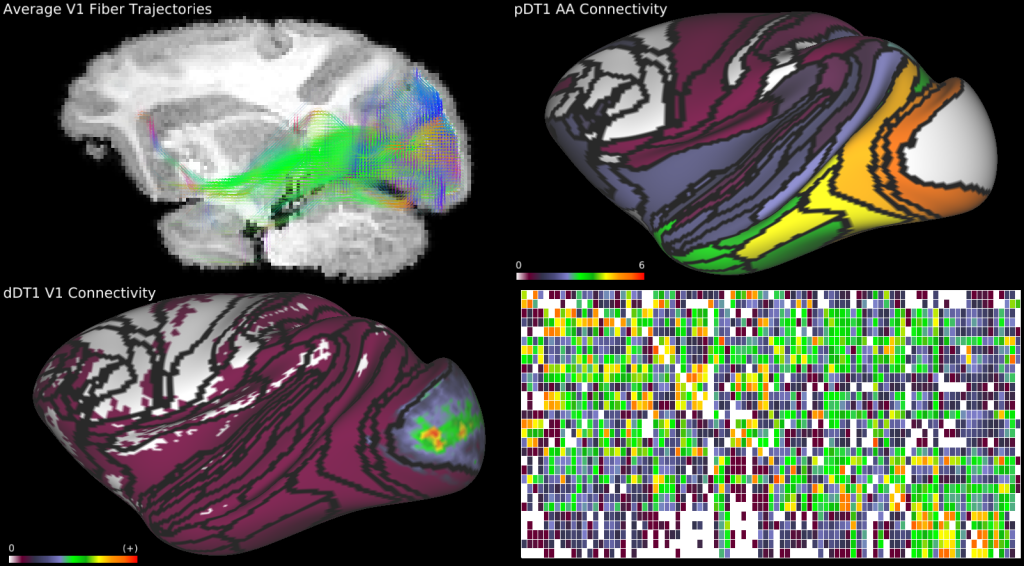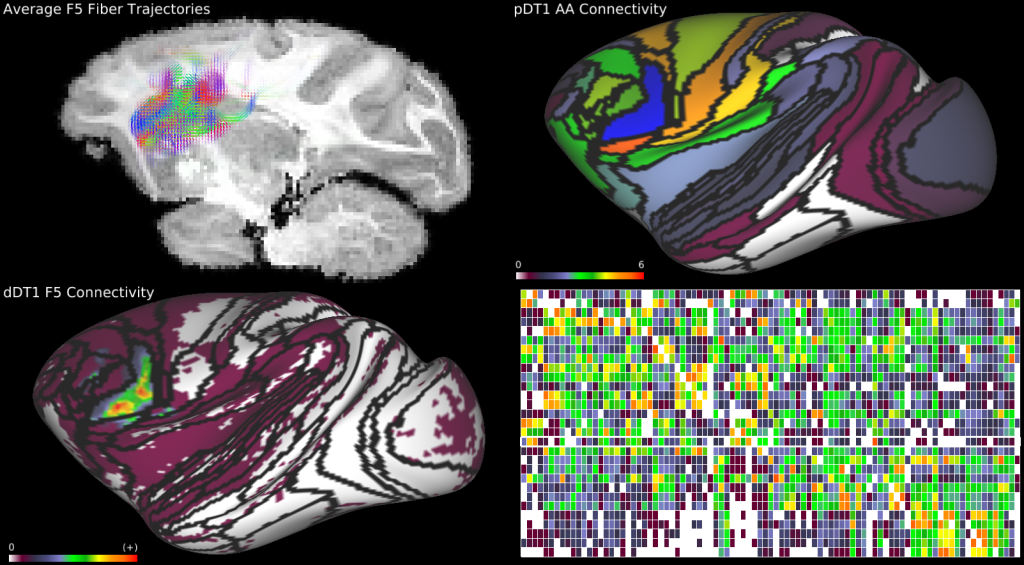FULL TITLE:
Using Diffusion Tractography to Predict Cortical Connection Strength and Distance: A quantitative comparison with Tracers in the Monkey
SPECIES:
Macaque
DESCRIPTION:
Tractography based on diffusion MRI has great potential for a variety of applications, including estimation of comprehensive maps of neural connections in the brain (“connectomes”). Here, we describe methods to assess quantitatively tractography’s performance in detecting interareal cortical connections and estimating connection strength by comparing it against published results using neuroanatomical tracers. We found the correlation of tractography’s estimated connection strengths versus tracer to be twice that of a previous study. Using a novel method for calculating interareal cortical distances, we show that tractography based estimates of connection strength have useful predictive power beyond just interareal separation. By freely sharing these methods and datasets, we provide a valuable resource for future studies in cortical connectomics.
Supplementary Material is available in two separate scene files:
- Donahue2016_supp.scene contains scenes that are associated with the manuscript figures.
- Donahue2016_supp_tract.scene contains scenes that display detailed connectivity information including visualization of fiber trajectories. This scene is included separately due to file size.
Reference for PM1 and PM2 data acquisition: http://onlinelibrary.wiley.com/doi/10.1002/hbm.21043/full
The authors wish to thank Drs Roberta Palmour and Maurice Ptito and the Behavioral Science Foundation of St-Kitts (West Indies) for providing the PM2 monkey specimen.
ABSTRACT:
Tractography based on diffusion MRI offers the promise of characterizing many aspects of long-distance connectivity in the brain, but requires quantitative validation to assess its strengths and limitations. Here, we evaluate tractography’s ability to estimate the presence and strength of connections between areas of macaque neocortex by comparing its results with published data from retrograde tracer
injections. Probabilistic tractography was performed on high-quality postmortem diffusion imaging scans from two Old World monkey brains. Tractography connection weights were estimated using a fractional scaling method based on normalized streamline density. We found a correlation between log-transformed tractography and tracer connection weights of r0.59, twice that reported in a recent study on the macaque. Using a novel method to estimate interareal connection lengths from tractography streamlines, we regressed out the distance dependence of connection strength and found that the correlation between tractography and tracers remains positive, albeit substantially reduced. Altogether, these observations provide a valuable, data-driven perspective on both the strengths and limitations of tractography for analyzing interareal corticocortical connectivity in nonhuman primates and a framework for assessing future tractography methodological refinements objectively.
PUBLICATION:
Journal of Neuroscience
- DOI:
10.1523/JNEUROSCI.0493-16.2016
- PMID:
27335406
- Chad J Donahue
- Stamatios N Sotiropoulos
- Saad Jbabdi
- Moises Hernandez-Fernandez
- Timothy E Behrens
- Tim B Dyrby
- Timothy Coalson
- Henry Kennedy
- Kenneth Knoblauch
- David C Van Essen
- Matthew Glasser
- Washington University in St. Louis
-
Donahue2016.scene
SCENES: -
Donahue2016_supp.scene
SCENES:- Figure 2S1: PM2a Predicted vs Observed Biases
- Figure 2S2: PM2b Predicted vs Observed Biases
- Figure 3S1a-b: PM1 pDT1/3 - V1 Connectivity
- Figure 3S1c-d: PM1 pDT1/3 - F5 Connectivity
- Figure 3S2a-b: PM2a pDT1/3 - V1 Connectivity
- Figure 3S2c-d: PM2a pDT1/3 - F5 Connectivity
- Figure 3S3a-b: PM2b pDT1/3 - V1 Connectivity
- Figure 3S3c-d: PM2b pDT1/3 - F5 Connectivity
- PM1 pDT1 Connectivity vs Tracer
- PM2a pDT1 Connectivity vs Tracer
- PM2b pDT1 Connectivity vs Tracer
- PM1/2a/2b pDT1/3 Comparisons
-
Donahue2016_supp_tract.scene
SCENES:

